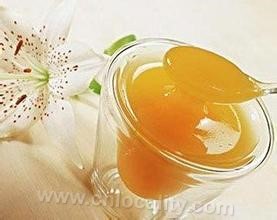welcomeSpecialty Foods Products!

Linden honey, a specialty of Raohe River: beekeeping in Raohe River has a history of one hundred years. The reason why honey is recognized as organic food has always depended on the wild honey source, and the most important one in the wild honey source is Tilia amurensis. The main honey source has been seriously damaged, which makes beekeepers who live in the mountains and engage in "sweet business" taste bitter taste. Tilia amurensis widely distributed in Nadan-Hadala Mountains, and its tree species account for more than 15% of the total forest. Wherever there are forests, Tilia amurensis is produced in linden honey. Tilia amurensis is a deciduous tree with alternate leaves and bisexual flowers, which is a high-quality honey source. Linden honey, produced in Heilongjiang Province, is as famous as litchi honey in Guangdong Province, and is the two famous honey in the north and south of China. Linden honey is crystal white, pure in color and sweet in taste. It is rich in glucose, vitamins, inorganic salts and organic acid enzymes, and has the effects of invigorating qi, tonifying middle warmer, relieving pain and detoxicating, and preventing and treating hypertension, constipation and insomnia. Tilia amurensis is a tall tree, which is distributed in the north and south of China. Tilia amurensis and Tilia amurensis are the main trees growing in Nadanhadala Ridge of Wanda Mountain Range, and it is an excellent tree species with great economic value in China. Tilia amurensis is white, light and soft, with fine texture. It is the main material for plywood, and can also be used for cabinets, doors and windows or wood carving. Most forest residents use it as a chopping board for cutting vegetables. Because of its fineness, lightness and softness, small expansion and contraction force and no deformation, it is also an important material in architecture, and is known as "broad-leaved Korean pine". In fact, the most commendable thing is Tilia amurensis nectar. Every year from mid-June to mid-July, it is the flowering season. Tilia amurensis flowers are in full bloom, and the forest is full of fragrant fragrance. Tilia amurensis flowers are very small. Each flower consists of five petals and five stigmas, all of which contain sparkling nectar. Tilia amurensis honey is crystal clear, mellow and sweet, and contains more glucose, fructose, vitamins, amino acids, hormones, enzymes and esters than ordinary honey. It has many curative effects such as enriching blood, moistening lung, relieving cough and quenching thirst, promoting cell regeneration, increasing appetite and relieving pain, and is a rare good product in honey. China's Tilia amurensis nectar is mainly produced in Zhangguangcailing and Wandashan, an important linden honey producing area in China, which is located in a national nature reserve. linden honey, produced by wild nectar sources, is well-known at home and abroad for its pure nature, no pollution, clean color and delicious taste, and has won many awards at home and abroad: in 1991, it won the gold medal in the National Spark Plan Achievement Expo; In 1992, linden honey won the silver prize of the first agricultural exposition in China; Won the gold medal at the 33rd International Beekeeping Conference and International Bee Products Expo; After 1996, it was successively recognized as organic food by the National Organic Food Development Center and the European Union Organic Food Organization.
Reprinted with attribution:
https://cnlocality.com/(Chinese Specialty Products)
other
consult:(+86)13225231905